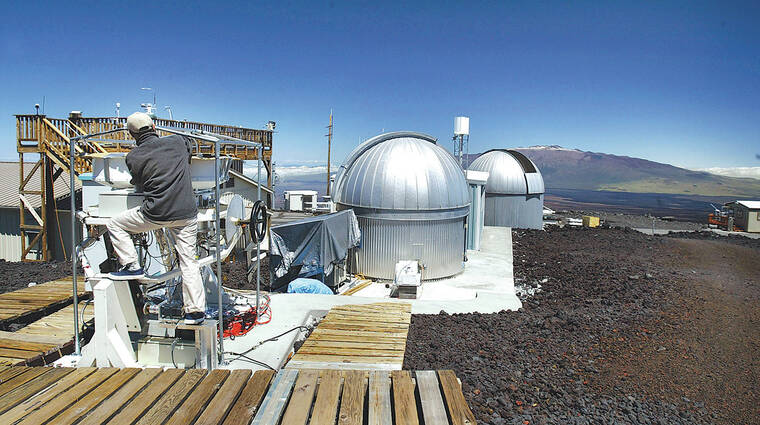The Pentagon will install rooftop solar panels as Biden pushes clean energy in federal buildings
WASHINGTON — The Defense Department will install solar panels on the Pentagon, part of the Biden administration’s plan to promote clean energy and “reestablish the federal government as a sustainability leader.”
The Pentagon is one of 31 government sites that are receiving $104 million in Energy Department grants that are expected to double the amount of carbon-free electricity at federal facilities and create 27 megawatts of clean-energy capacity while leveraging more than $361 million in private investment, the Energy Department said.
Energy Secretary Jennifer Granholm, Deputy Defense Secretary Kathleen Hicks and Brenda Mallory, chair of the White House Council on Environmental Quality, announced the projects Wednesday at the Pentagon.
The solar panels are among several improvements set for the Pentagon, which also will install a heat pump system and solar thermal panels to reduce reliance on natural gas and fuel oil combustion systems
Brendan Owens, assistant secretary of Defense for energy, installations and environment, said the projects will improve energy resilience and reliability at the Pentagon and other military sites in the U.S. and Germany. He called energy use “central to everything we do.”
Solar panels will provide “an uninterrupted power source” at the Pentagon in case of a cyberattack or other outage to the bulk grid, as well as reduce strain on the building’s power load, Owens said in an interview.
Because of the Pentagon’s “relatively congested air space” outside Washington, solar panels were the best option for clean energy, he said. The building is a nationally registered historic landmark, so officials will work with local officials to ensure the panels meet all requirements.
The grant program also includes energy upgrades at Naval bases in Georgia and Washington state, as well as the Naval Support Activity Mid-South in Tennessee.
In addition to the Defense Department, projects also include installation of thermally efficient windows at the Energy Department headquarters in Washington, as well as efficiency upgrades to the Commerce and Transportation departments.
Other agencies selected for projects include the Interior and Veterans Affairs departments, as well as the General Services Administration, Office of Personnel Management and Social Security Administration.
The program also will make the Mauna Loa Observatory in Hawaii a net-zero emissions facility. The site run by the National Oceanic and Atmospheric Administration ceased all measurements and radio transmissions in late November after a lava eruption of the Mauna Loa volcano cut the power line and buried over a mile of the access road to the observatory. Since November, access to the site has been limited to costly weekly visits by helicopter to collect limited atmospheric data, officials said.
The grant program will install solar panels and batteries at the observatory to make the facility a net-zero site for carbon emissions, bring atmospheric science instrumentation back online and significantly improve the site’s climate resiliency, officials said.
“As the observatory is considered the definitive source for documenting the increased atmospheric burden of fossil fuel emissions, this project has the unique ability to eliminate 100% of the combustion of fossil-fueled electrical power to make those critical measurements,” the Energy Department said.
The funding announced Wednesday is the first of three disbursements expected from the Assisting Federal Facilities with Energy Conservation Technologies or AFFECT program included in the 2021 infrastructure law. A total of $250 million was awarded to the program, which was established in 1992 to help agencies cut energy consumption.
The projects align with Biden’s 2021 executive order that called for a 65% reduction in greenhouse gas emissions from federal operations by 2030 and a net-zero building portfolio by 2045.


